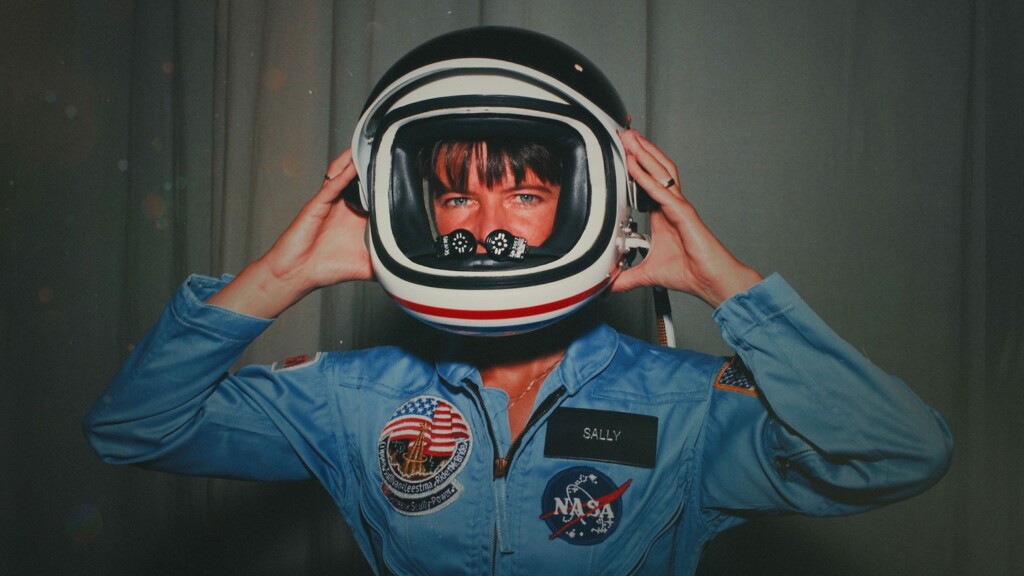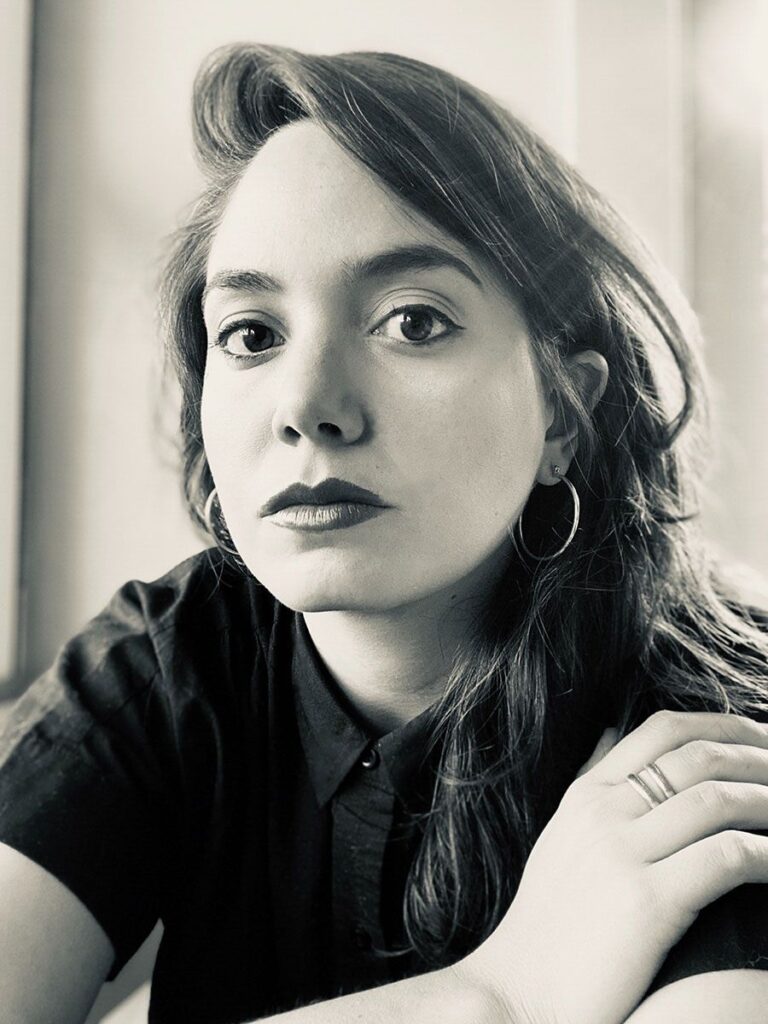A splendid portrait of the first American woman and the youngest American astronaut to travel into space, SALLY, which premiered at Sundance, excels at weaving the public and private dimensions of Sally Ride’s life together into an engrossing narrative.
Directed by Cristina Costantini and representing her third documentary to receive its premiere at Sundance in seven years, SALLY is the perfect companion to the definitive biography about Ride that broadcast journalist Lynn Sherr had published in 2014.
In an interview with The Utah Review, Costantini said she had approached National Geographic several years ago about its potential interest in a film about Ride but a project was already being considered for production. Most notably, Tam O’Shaughnessy,,who was Ride’s life partner for many years, had agreed to participate in the production. Like many others (including Sherr), Costantini only learned about Ride’s same-sex relationship, after the former astronaut died of pancreatic cancer in 2012.

“Sally was a hero to me when I was a kid,” Costantini said. “I even painted a mural of her image on the wall at my elementary school.” As for O’Shaughnessy, who like Ride had a doctorate in the sciences and enjoyed tennis (and both had attended a camp with tennis star Billie Jean O’King), Costantini added, “Tam is my hero as an adult.”
In distilling a comprehensive account of Ride’s public life with NASA, Costantini said she “was incredibly blessed with a mountain of archival material.” NASA provided more than 5,000 reels of footage — in 16 mm, 35 mm and 70 mm formats. Of course, there are snippets of spectacular footage of rocket launches, which spark strong nostalgic feelings about NASA’s glory days when it seemed nothing could go wrong. The most revealing and edifying snippets document the training, public briefings and events introducing the 1978 class of astronauts, who were selected by NASA. Among those in the class was Judith Resnik, who was the second American woman to travel into space, and who later died in the 1986 Challenger space shuttle accident.
Ride emerges as a confident, competitive, quick study, who also was introverted and protective of her image. While reporters tried repeatedly to pierce her shield in hopes of digging more into her social and emotional persona, Ride insisted on talking about the merits of women making inroads in the world of space exploration. A satisfying scene captures Mike Mullane, who was part of the same astronaut class, doing a mea culpa, admitting how wrong he was about questioning whether or not women were up to the rigors of the space program.
In the 1970s and 1980s, American astronauts were treated as celebrities, who often were invited to television variety and talk shows including special programs with Bob Hope, a comedian whose material has not aged well. Ride would not have any of these public relations trappings. Costantini explained that Ride’s introverted personality and her unflagging guard of her public image likely made her an ideal selection for the class of eight astronauts. Ride’s personality and willingness to distance herself from the public press were much like those of Neil Armstrong, the first person to walk on the moon.
As for her private life and her relationships throughout her life — notably, with O’Shaughnessy — the challenge for Costantini was more formidable. “There was no documentation of that,” she explained. “How do you tell a love story without imagery?” O’Shaughnessy was generous in recollecting the details about falling in love and in several scenes, she shares letters and snapshots. Additionally, Costantini recreated some of O’Shaughnessy’s stories, filmed in soft light, with actors (Katherine Bird and Carolyn Grundman), which celebrate their love and warm the narrative up throughout the film.

Costantini also had hoped to learn more about what Ride’s feelings and sentiments were, by interviewing the mother, who was 101 years old. But, little if anything was gained from it. More valuable were clips featuring her sister, Bear, who also had a same-sex relationship.
One observation that struck Costantini was how Ride’s confidence in her abilities was shaken during her school years which made her wonder if she was suited to pursue a career in the sciences. Another surprise was the willingness of Steven Hawley, who was part of the same astronaut class, to talk about their five-year marriage, which ended in divorce, after Ride had decided to make her relationship with O’Shaughnessy a long-term one.
“He initially indicated that he was not going to discuss their marriage on camera,” Costantini said, “but that changed once he was in the chair with the camera on. Without any prodding, he talked about it, which was surprising because he was known to be notoriously introverted.”
Costantini said that she had never worked on a project with a central figure who did not want anything to be known about them. In contrast, for her 2020 documentary Mucho Mucho Amor, about the Latin America pop culture giant television psychic Walter Mercado, which premiered at Sundance and later streamed on Netflix, Mercado did not pull back from talking about his feelings. In 2018, her documentary Science Fair, which followed students who competed in the International Science and Engineering Fair (ISEF), won the audience awards at Sundance and SXSW.
During Sundance, SALLY was tapped for the 2025 Alfred P. Sloan Feature Film Prize and received a $25,000 cash award from the Alfred P. Sloan Foundation. Ride’s life as a scientist reached much deeper than the nine years she was in the space program. With O’Shaughnessy, she founded Sally Ride Science in 2001, which currently operates as a nonprofit organization emphasizing programs in the sciences for students and teachers in elementary schools and high schools and is administered by the University of California at San Diego
Her next film, which is expected to stream on Netflix later this year, is about Karol G, a Colombian singer and songwriter who is one of the most influential reggaeton and urban pop musicians currently.
Collaborating for the third time with Costantini, composer Jeff Morrow penned the original score for SALLY. The character and textures in the film’s music clearly mark the threads and pivotal points in the public and private storylines about Ride. Morrow was among the composers who participated in ASCAP Screen Time at Sundance, the ASCAP Film & Television team’s ongoing interview series about the craft and business of music for screens, with the creators behind some of the festival’s most anticipated films.
“We started the same as we did with Science Fair and Mucho Mucho Amor, in terms of communicating back and forth about what we wanted. Cristina [Costantini] and I always click together on finding those moments of charm and levity in the story being told,” Morrow said in an interview with The Utah Review. “There was a lot more room to go fairly big and majestic this time to capture the grandeur of going to space, especially with synthesizers. For the intimate, more emotional side of the story, I went with a string sextet, featuring three violins and three cellos.” The score nicely supports the energetic rhythms that keep the film moving at a brisk clip.
Morrow is an Emmy-nominated composer in film and television. He recently scored Disney’s live-action Snow White, directed by Marc Webb, produced by Marc Platt with songs by Pasek & Paul. Alongside his score featuring a 100-piece orchestra you can hear him as the whistling voice of Dopey. SALLY also was among this year’s Sundance films that received a Utah Film Center fiscal sponsorship.
